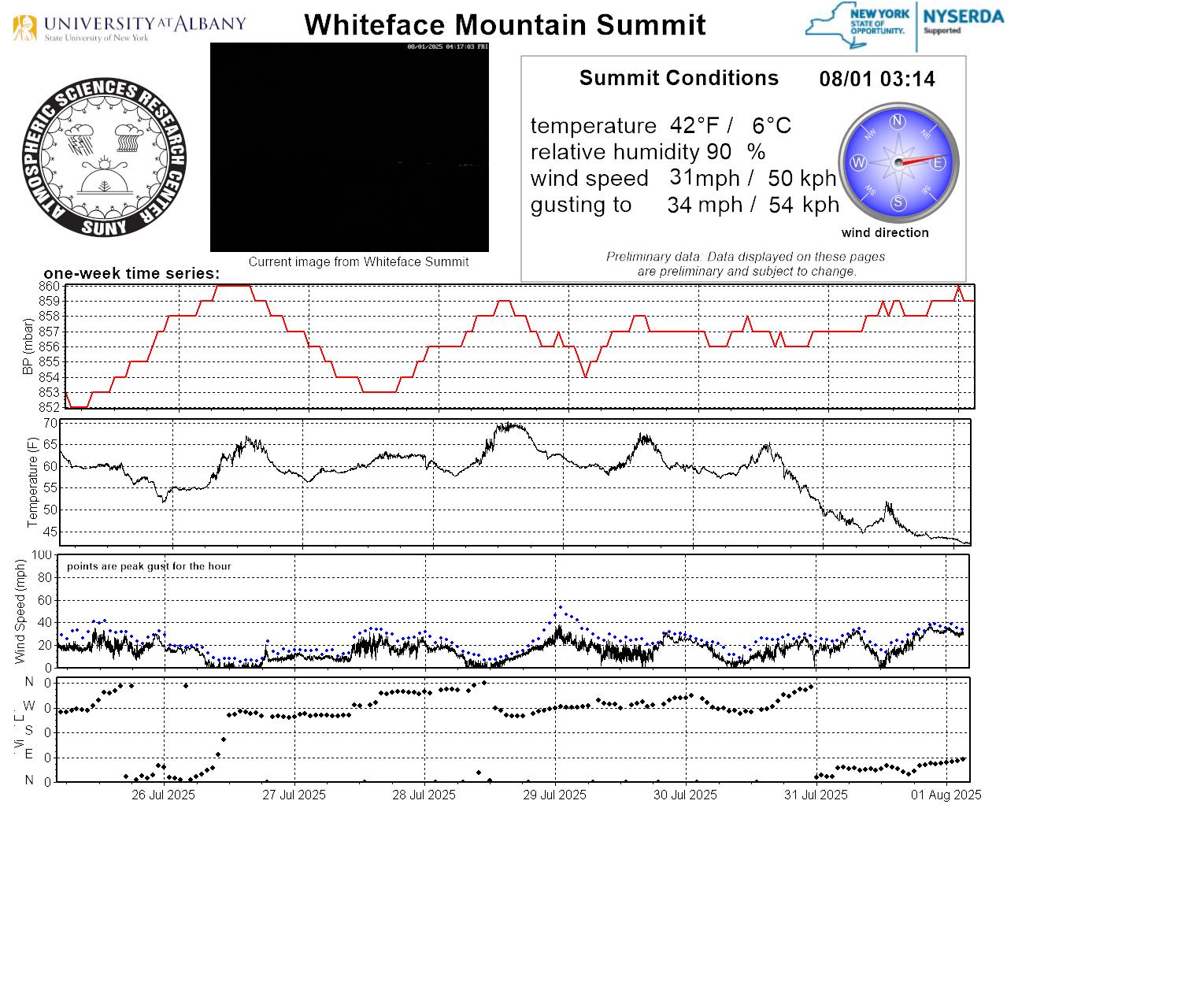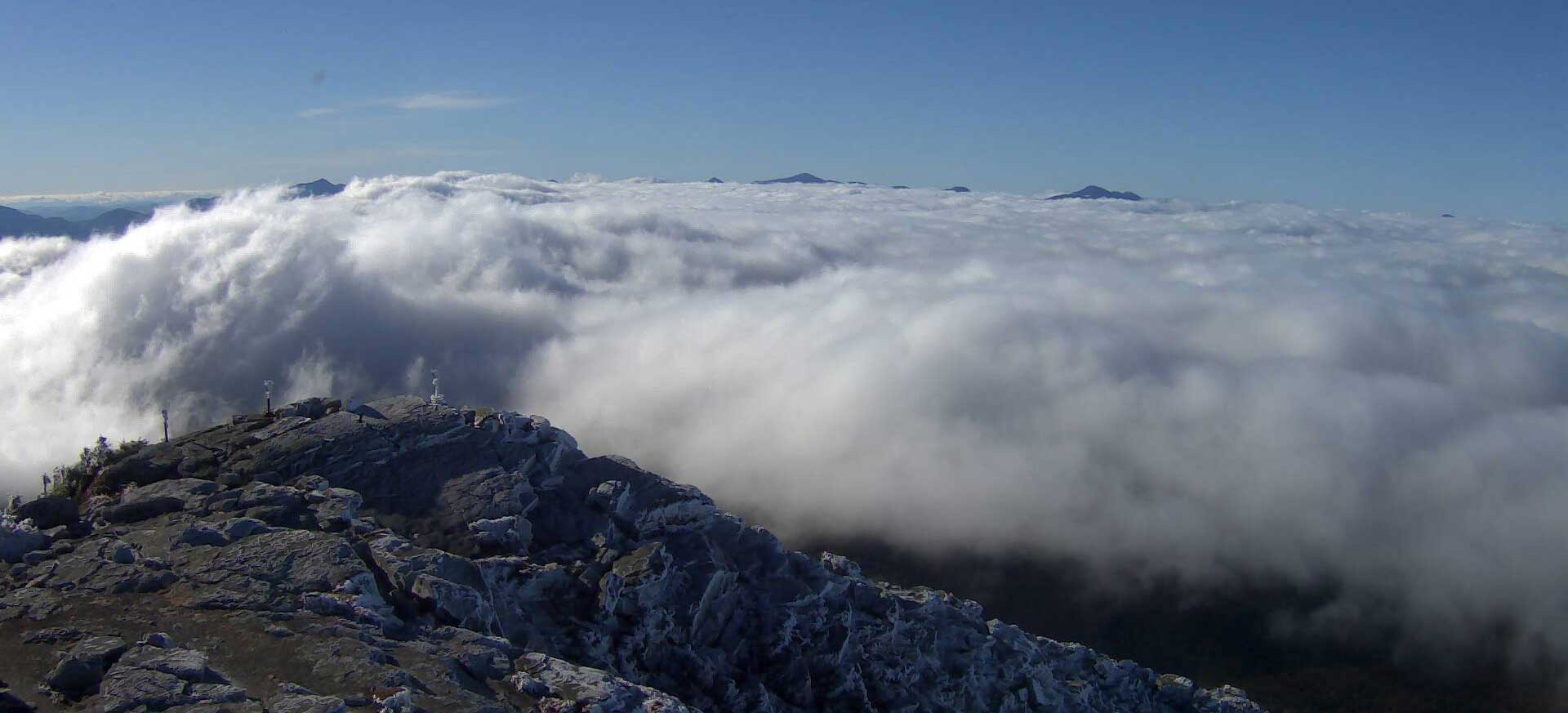
Mountain Weather & Climate
What Makes Mountain Weather & Climate Special?
Mountains shape the weather and climate around them leading to complex and fascinating weather patterns. They alter local wind patterns, deflecting the winds in different directions, sheltering some areas from winds, and enhancing winds in others. By affecting how air currents rise and sink, they also modify clouds and precipitation (rainfall and snowfall).
A mountain's slope, elevation, and vegetation all affect the local temperatures and humidity. Mountains are often home to extreme weather and climate conditions. For instance, mountain peaks are exposed to higher atmospheric layers where temperatures are typically colder and winds are stronger, sometimes leading to ferocious wild chills. Locally deep snows can accumulate and persist due to cold temperatures and enhanced snowfall.
Mountain peaks can spend much of their time inside of clouds. During the cold season, this can lead to rime ice deposition onto rocks, vegetation, and human‐made structures. The unique weather and climate conditions on mountains also shape local ecosystems, often supporting communities of species much different from those found at lower elevations.
History of Meteorological Measurements at Whiteface Mountain
In The Beginning...
Completion of the Whiteface Mountain Veteran's Memorial Highway in 1935 facilitated easier access to the mountain's summit. The highway brings road access to within 92 vertical meters of the summit, and a tunnel through the mountain leads to an elevator which, when operational, provides personnel and equipment a secure route to the silo observatory building on top of the mountain.
Temperature measurements began at Whiteface in 1937 as a cooperative project between Rensselaer Polytechnic Institute, New York University, the Whiteface Mountain Highway Commission, and the Weather Bureau (later the National Weather Service). These measurements continued until 1946, providing the first extensive record of meteorological data at Whiteface. After a ten year hiatus, weather monitoring continued at the mountain.
In 1957 Vincent Schaefer, founder of ASRC, began working with the Whiteface Mountain Authority and the new Whiteface Ski Center to establish a Museum of the Atmosphere program on the mountain. Dr. Schaefer received support from the Whiteface Mountain Authority to purchase and install a wide array of meteorological instrumentation, and with the assistance of colleague Ray Falconer, these instruments were put into service on the mountain. Falconer would post daily weather information at the main Ski Center and would provide radio weather forecasts as well.
Today...

In 2016 a New York State Mesonet weather station was installed at the Marble Mountain field station. The station is continuously collecting a wide array of high‐quality meteorological measurements every five minutes and making them available in near real‐time. These include standard meteorological measurements of temperature, relative humidity, pressure, wind speed, wind direction, solar radiation, and precipitation amount. The station also measures soil moisture and temperature at three depths (5, 25, and 50 cm), snow depth, snow water equivalent (the mass of water contained in the snow), and provides digital camera images.
Why Is It Important to Study Mountain Weather & Climate?
Studying the processes shaping mountain weather helps us to improve weather forecasts for mountain regions. These forecasts help those that live and work in the mountains to conduct their daily lives and businesses. They also help those of us that enjoy recreating in the mountains to plan ahead, enabling us to have safe and enjoyable experiences.
Many mountain regions are susceptible to weather‐related natural hazards, such as floods, landslides, and avalanches. Preparing for these events relies on good understanding and forecasts of mountain weather. Mountain rain and snow is also important for those communities outside of mountain regions, as this precipitation feeds rivers that supply water for societal needs such as irrigation, drinking, and hydropower, and recreational needs such as water sports, and snowmaking.
Climate is the statistics of weather. Monitoring and understanding mountain weather helps us to understand how mountain climates are changing and helps us prepare for the future. As the Earth's climate changes, many mountains are warming, losing snow and ice, and experiencing altered weather systems. Long‐term observations help us track changes in mountain climate. They also provide us a basis to evaluate the computer models used for projecting future changes in mountain climates. Understanding how mountain climates are likely to change in the future helps us to protect mountain communities, manage natural resources, guard against natural hazards, and conserve delicate ecosystems.
Multimedia
Take a field trip to the summit and learn about an inversion layer!
Image
Sitting on the clouds in undercast conditions!

Image
Ray Falconer, "The Voice of ASRC" giving a radio weather forecast from the summit! (c. 1958)

